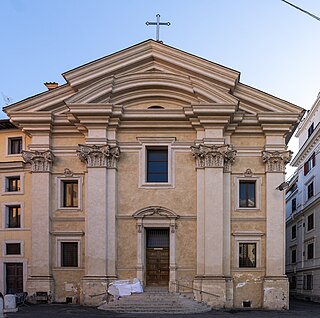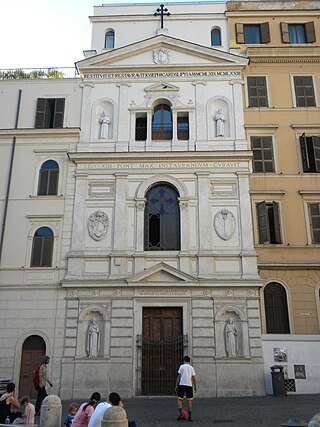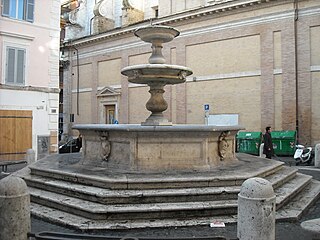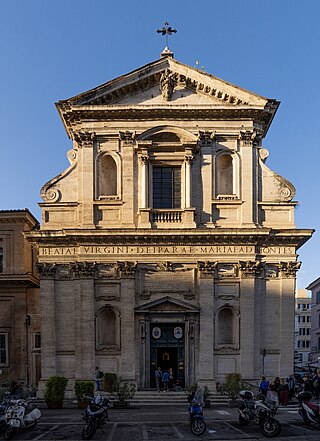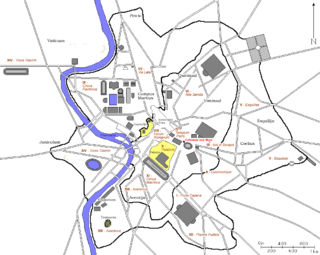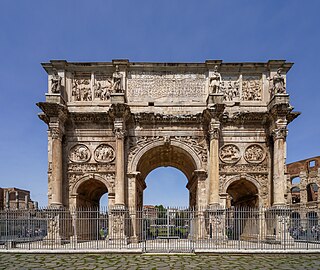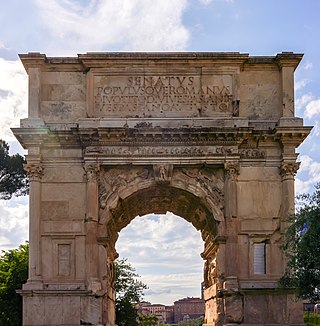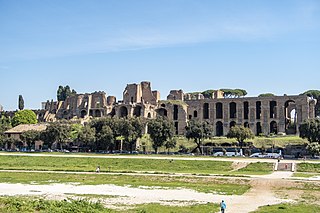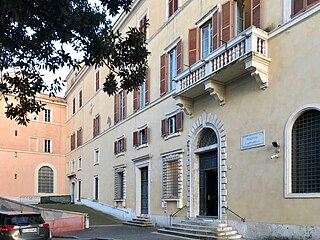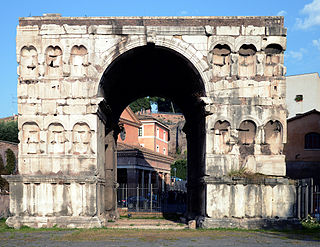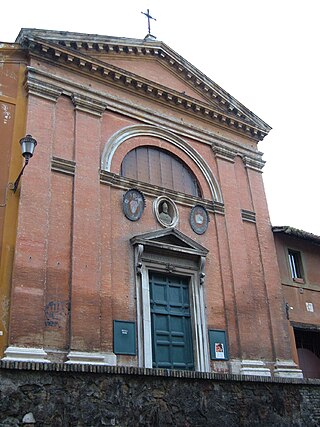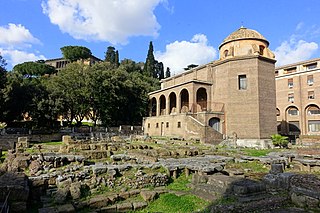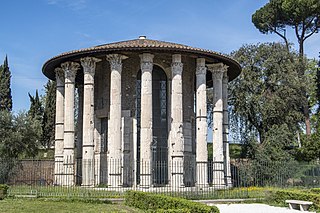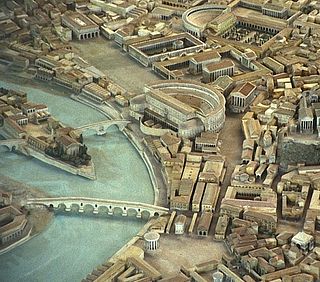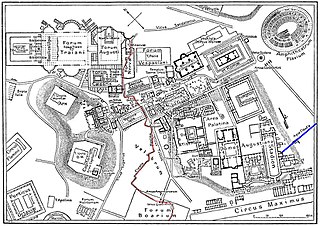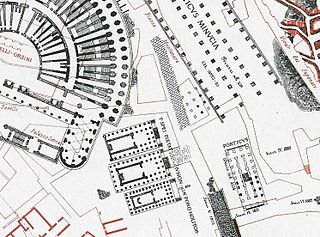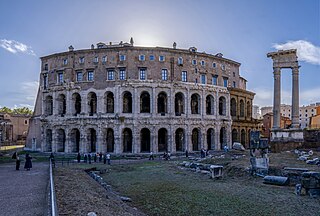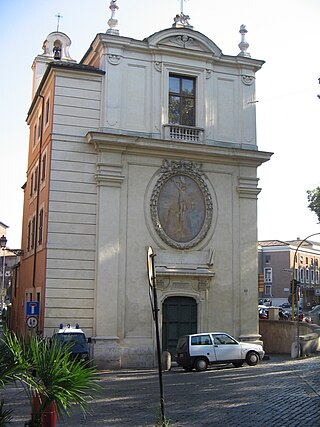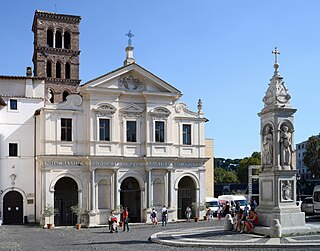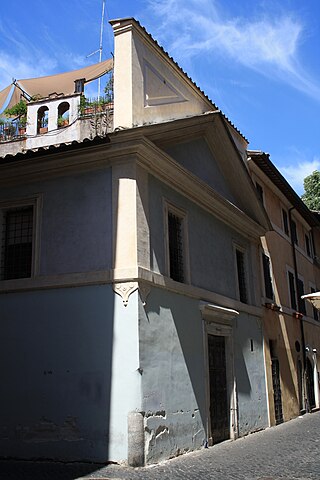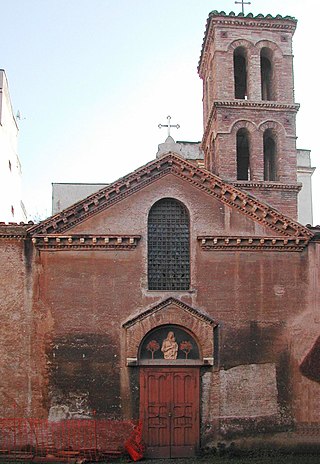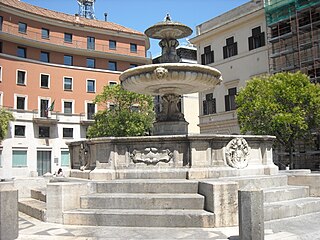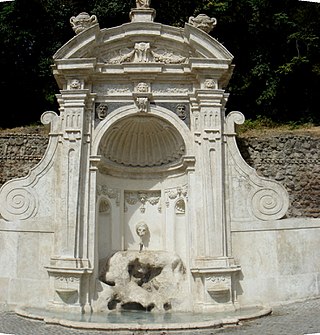Self-guided Sightseeing Tour #16 in Rome, Italy
Legend
Guided Free Walking Tours
Book free guided walking tours in Rome.
Guided Sightseeing Tours
Book guided sightseeing tours and activities in Rome.
Tour Facts
14.7 km
433 m
Experience Rome in Italy in a whole new way with our free self-guided sightseeing tour. This site not only offers you practical information and insider tips, but also a rich variety of activities and sights you shouldn't miss. Whether you love art and culture, want to explore historical sites or simply want to experience the vibrant atmosphere of a lively city - you'll find everything you need for your personal adventure here.
Activities in RomeIndividual Sights in RomeSight 1: Chiesa San Tommaso Moro
The church of San Tommaso Moro is a church in Rome, in the Tiburtino district, in Via dei Marrucini.
Sight 2: Porta San Lorenzo
Porta Tiburtina or Porta San Lorenzo is a gate in the Aurelian Walls of Rome, Italy, through which the Via Tiburtina exits the city.
Sight 3: Teatro Ambra Jovinelli
The Teatro Ambra Jovinelli, formerly known just as Teatro Jovinelli, is a theatre located in Rome, Italy.
Wikipedia: Teatro Ambra Jovinelli (EN), Website, Facebook, Instagram, Youtube
Sight 4: Sant'Eusebio all'Esquilino
Sant'Eusebio is a titular church in Rome, devoted to Saint Eusebius of Rome, a 4th-century martyr, and built in the Esquilino rione. One of the oldest churches in Rome, it is a titular church and the station church for the Friday after the fourth Sunday in Lent.
Sight 5: Santi Vito e Modesto
Santi Vito e Modesto is a Roman Catholic church, and appears to have two facades, a 20th-century marble facade on Via Carlo Alberto, but a rustic brick older entrance, in reality the apse, on the Via San Vito in the Rione Esquilino of Rome, Italy. It has also been called Santi Vito, Modesto e Crescenzia. It is located in the Rione Esquilino, adjacent to the Servian Wall, near the former Monastery of the Viperesche.
Sight 6: Oratorio di Santa Maria Immacolata della Concezione
The Oratory of Santa Maria Immacolata della Concezione is a church in Rome, in the Esquilino district, in Via di San Vito.
Wikipedia: Oratorio di Santa Maria Immacolata della Concezione (IT)
Sight 7: Chiesa di Santa Lucia in Selci
The Church of Saint Lucy in Selci is an ancient Roman Catholic church, located in Rome, dedicated to Saint Lucy, a 4th-century virgin and martyr.
Sight 8: Chiesa di Sant'Alfonso dei Liguori
The Church of Saint Alphonus of Liguori is a rectory church located on the Via Merulana on the Esquiline Hill of central Rome's Vth prefecture, Italy, and a titular church for a Cardinal-priest under the name Santissimo Redentore e Sant'Alfonso in Via Merulana.
Sight 9: Ninfeo di Alessandro Severo
The Nymphaeum of Alexander Severus, a monument better known as the "Trophies of Marius", is a fountain of ancient Rome, the remains of which are preserved in the northern corner of Piazza Vittorio Emanuele II in the Esquilino district.
Sight 10: Cappella di Sant'Elena
The Chapel of Sant'Elena all'Esquilino is a church in Rome, in the Esquilino district, in Via Machiavelli.
Sight 11: Chiesa di San Giuseppe di Cluny
The church of San Giuseppe di Cluny is a church in Rome, in the Monti district, in Via Poliziano.
Sight 12: Domus Aurea
The Domus Aurea was a vast landscaped complex built by the Emperor Nero largely on the Oppian Hill in the heart of ancient Rome after the great fire in 64 AD had destroyed a large part of the city.
Sight 13: Baths of Trajan
The Baths of Trajan were a massive thermae, a bathing and leisure complex, built in ancient Rome and dedicated under Trajan during the kalendae of July 109, shortly after the Aqua Traiana was dedicated.
Sight 14: Moses (Michelangelo)
Moses is a sculpture by the Italian High Renaissance artist Michelangelo, housed in the church of San Pietro in Vincoli in Rome. Commissioned in 1505 by Pope Julius II for his tomb, it depicts the biblical figure Moses with horns on his head, based on a description in chapter 34 of Exodus in the Vulgate, the Latin translation of the Bible used at that time. Some scholars believe the use of horns may often hold an antisemitic implication, while others hold that it is simply a convention based on the translation error.
Sight 15: Chiesa dei Santi Gioacchino e Anna ai Monti
Santi Gioacchino ed Anna ai Monti is a church on the Via Monte Polacco in Rome.
Sight 16: Chiesa di San Lorenzo in Fonte
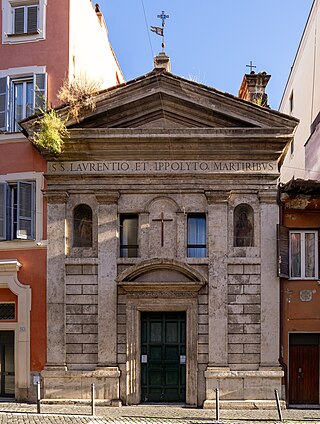
Santi Ippolito e Lorenzo in Fonte, better known as San Lorenzo in Fonte, is a Catholic church in Rome (Italy), Rione Monti, on Via Urbana.
Sight 17: Santi Sergio e Bacco in Suburra
The Cathedral of Saints Sergius and Bacchus of the Ukrainians, is a Catholic place of worship of the Byzantine-Ukrainian Eastern rite in the historic center of Rome, in the Monti district, in Piazza della Madonna dei Monti. Since 2019 it has been the cathedral of the apostolic exarchate for the Ukrainian Catholic faithful of the Byzantine rite residing in Italy. The church is dedicated to two Syrian martyr saints, officers of the Roman army, martyred in 303 under Emperor Diocletian. It is the national church of the Ukrainians.
Wikipedia: Chiesa dei Santi Sergio e Bacco degli Ucraini (IT)
Sight 18: Fontana della Madonna dei Monti
The Fountain of the Catechumens is a fountain built in 1589 by Battista Rusconi to a design by Giacomo Della Porta and located in Piazza della Madonna dei Monti in the Monti district, in Rome.
Sight 19: Chiesa di Santa Maria ai Monti
Santa Maria dei Monti is a cardinalatial titular church, located at 41 Via della Madonna dei Monti, at the intersection with Via dei Serpenti, in the rione Monti of Rome, Italy. The church is dedicated to the Blessed Virgin Mary.
Sight 20: Chiesa di San Francesco di Paola ai Monti
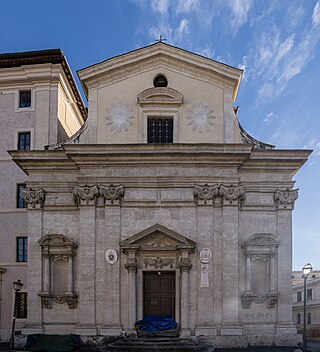
San Francesco da Paola ai Monti is an 18th-century titular church in Rome. It is dedicated to St Francis of Paola, the founder of the Order of Minims, whose friars serve this church and whose Generalate is attached to it, and is located in the Monti rione.
Sight 21: pedestal of colossus of Nero
The Colossus of Nero was a 30-metre (98 ft) bronze statue that the Emperor Nero created in the vestibule of his Domus Aurea, the imperial villa complex which spanned a large area from the north side of the Palatine Hill, across the Velian ridge to the Esquiline Hill in Rome. It was modified by Nero's successors into a statue of the sun god Sol. The statue was eventually moved to a spot outside the Flavian Amphitheatre, which became known, by its proximity to the Colossus, as the Colosseum.
Sight 22: Arch of Constantine
The Arch of Constantine is a triumphal arch in Rome dedicated to the emperor Constantine the Great. The arch was commissioned by the Roman Senate to commemorate Constantine's victory over Maxentius at the Battle of the Milvian Bridge in AD 312. Situated between the Colosseum and the Palatine Hill, the arch spans the Via Triumphalis, the route taken by victorious military leaders when they entered the city in a triumphal procession. Dedicated in 315, it is the largest Roman triumphal arch, with overall dimensions of 21 m (69 ft) high, 25.9 m (85 ft) wide and 7.4 m (24 ft) deep. It has three bays, the central one being 11.5 m (38 ft) high and 6.5 m (21 ft) wide and the laterals 7.4 m (24 ft) by 3.4 m (11 ft) each. The arch is constructed of brick-faced concrete covered in marble.
Sight 23: Arch of Titus
The Arch of Titus is a 1st-century AD honorific arch, located on the Via Sacra, Rome, just to the south-east of the Roman Forum. It was constructed in c. 81 AD by Emperor Domitian shortly after the death of his older brother Titus to commemorate Titus's official deification or consecratio and the victory of Titus together with their father, Vespasian, over the Jewish rebellion in Judaea.
Sight 24: Palatine Hill
Get Ticket*The Palatine Hill, which relative to the seven hills of Rome is the centremost, is one of the most ancient parts of the city; it has been called "the first nucleus of the Roman Empire". The site is now mainly a large open-air museum whilst the Palatine Museum houses many finds from the excavations here and from other ancient Italian sites.
Sight 25: Domus Augustana - Peristilio
The House of Augustus, or the Domus Augusti, is situated on the Palatine Hill in Rome, Italy. This house has been identified as the primary place of residence for the emperor Augustus.
Sight 26: Tempio di Augusto
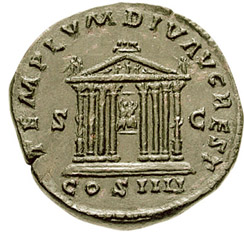
The Temple of Divus Augustus was a major temple originally built to commemorate the deified first Roman emperor, Augustus. It was built between the Palatine and Capitoline Hills, behind the Basilica Julia, on the site of the house that Augustus had inhabited before he entered public life in the mid-1st century BC. It is known from Roman coinage that the temple was originally built to an Ionic hexastyle design. However, its size, physical proportions and exact site are unknown. Provincial temples of Augustus, such as the much smaller Temple of Augustus in Pula, now in Croatia, had already been constructed during his lifetime. Probably because of popular resistance to the notion, he was not officially deified in Rome until after his death, when a temple at Nola in Campania, where he died, seems to have been begun. Subsequently, temples were dedicated to him all over the Roman Empire.
Sight 27: Palazzo Caffarelli
The Palazzo Caffarelli al Campidoglio stands on the southwest side of the Capitoline Hill, and now houses a wing of the Capitoline Museums, the cafeteria and a panoramic terrace.
Sight 28: Santa Maria della Consolazione al Foro Romano
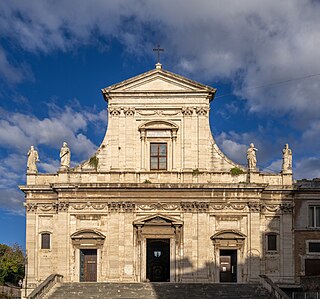
Santa Maria della Consolazione is a baroque Catholic church at the foot of the Palatine Hill in rione Campitelli, Rome, Italy. It is served by Capuchin Franciscan friars.
Sight 29: San Giorgio in Velabro
San Giorgio in Velabro is a Catholic church dedicated to St. George on Via del Velabro in the historic center of Rome in the Velabrum and the Ripa district. The church—the result of the 9th century expansion of a previous diaconal building and subsequent remodeling—stands near the Arch of Janus in the small square of the Cloaca Maxima. The location of S. Giorgio is not far from the place where the founding legend of Rome places the discovery of the twins Romulus and Remus by the she-wolf. The façade of the church encroaches upon and incorporates the Arcus Argentariorum, which was completed in 204 AD.
Sight 30: Arch of Janus
The Arch of Janus is the only quadrifrons triumphal arch preserved in Rome. It was set up in the early 4th century AD at a crossroads at the northeastern limit of the Forum Boarium, close to the Velabrum, over the Cloaca Maxima drain that went from the Forum to the River Tiber.
Sight 31: Chiesa di Sant’Eligio dei Ferrari
The church of Sant'Eligio dei Ferrari is a Catholic place of worship in the historic center of Rome, located in the Ripa district, in Via di San Giovanni Decollato.
Sight 32: Chiesa di San Giovanni Battista Decollato
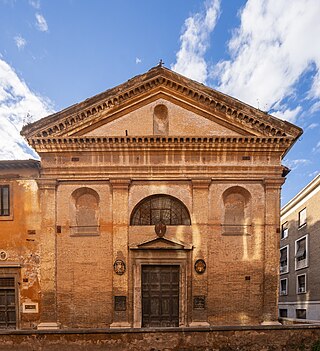
San Giovanni Decollato is a Roman Catholic church in Rome, sited on via di San Giovanni Decollato in the Ripa rione, a narrow road named after the church. Its construction took most of the 16th century.
Sight 33: Temples of the Sacred Area of S. Omobono
The Sant'Omobono Area is an archaeological site in Rome next to the church of Sant'Omobono, at the junction of via L. Petroselli and the Vico Jugario at the foot of the Campidoglio. It was discovered in 1937 and contains much important evidence for archaic and republican Rome. It contains altars and the sites of the temple of Fortuna and the temple of Mater Matuta. An earlier archaic-period temple underlies these two, dating itself to the early 6th century BCE, making it the oldest known temple remains in Rome.
Sight 34: Chiesa di Santa Maria in Cosmedin
The Basilica of Saint Mary in Cosmedin is a minor basilican church in Rome, Italy, dedicated to the Virgin Mary. It is located in the rione (neighborhood) of Ripa. Constructed first in the sixth century as a diaconia (deaconry) in an area of the city populated by Greek immigrants, it celebrated Eastern rites and currently serves the Melkite Greek Catholic community of Rome. The church was expanded in the eighth century and renovated in the twelfth century, when a campanile was added. A Baroque facade and interior refurbishment of 1718 were removed in 1894–1899; the exterior was restored to twelfth-century form, while the architecture of the interior recalls the eighth century with twelfth-century furnishings. The narthex of the church contains the famous Bocca della Verità sculpture.
Sight 35: Temple of Hercules Victor
The Temple of Hercules Victor or Hercules Olivarius is a Roman temple in Piazza Bocca della Verità, the former Forum Boarium, in Rome, Italy. It is a tholos, a round temple of Greek 'peripteral' design completely surrounded by a colonnade. This layout caused it to be mistaken for a temple of Vesta until it was correctly identified by Napoleon's Prefect of Rome, Camille de Tournon.
Sight 36: Forum Boarium
The Forum Boarium was the cattle market or forum venalium of ancient Rome. It was located on a level piece of land near the Tiber between the Capitoline, the Palatine and Aventine hills. As the site of the original docks of Rome and adjacent to the Pons Aemilius, the earliest stone bridge across the Tiber, the Forum Boarium experienced intense commercial activity.
Sight 37: Cloaca Máxima
The Cloaca Maxima or, less often, Maxima Cloaca, was one of the world's earliest sewage systems. Its name is related to that of Cloacina, a Roman goddess. Built during either the Roman Kingdom or early Roman Republic, it was constructed in Ancient Rome in order to drain local marshes and remove waste from the city. It carried effluent to the River Tiber, which ran beside the city. The sewer started at the Forum Augustum and ended at the Ponte Rotto and Ponte Palatino. It began as an open air canal, but it developed into a much larger sewer over the course of time. Agrippa renovated and reconstructed much of the sewer. This would not be the only development in the sewers. By the first century CE all eleven Roman aqueducts were connected to the sewer. After the Roman Empire fell the sewer still was used. By the 19th century, it became a tourist attraction. Some parts of the sewer are still used today. Whilst still being used, it was highly valued as a sacred symbol of Roman culture, and Roman engineering.
Sight 38: Temple of Portunus
The Temple of Portunus is an ancient Roman temple in Rome, Italy. It was built beside the Forum Boarium, the Roman cattle market associated with Hercules, which was adjacent to Rome's oldest river port and the oldest stone bridge across the Tiber River, the Pons Aemilius. It was probably dedicated to the gateway god Portunus although the precise dedication remains unclear as there were several other temples in the area besides his. It was misidentified as the Temple of Fortuna Virilis from the Renaissance and remains better known by this name. The temple is one of the best preserved of all Roman temples.
Sight 39: Chiesa di San Nicola in Carcere
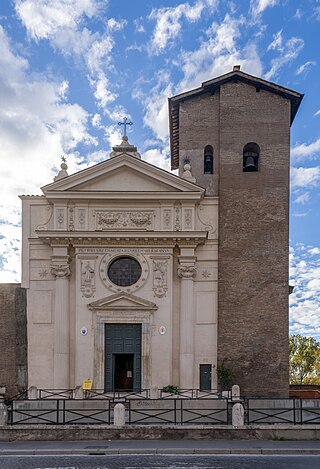
San Nicola in Carcere is an ancient titular church and minor basilica in Rome near the Forum Boarium in rione Ripa. It is constructed in the remains of the three temples of the Forum Holitorium and is one of the traditional stational churches of Lent. The parish was suppressed in 1931 and it is now served by the Clerics Regular of the Mother of God from the nearby Santa Maria in Campitelli.
Sight 40: Foro Olitorio
The Forum Holitorium or Olitorium is an archaeological area of Rome, Italy, on the slopes of the Capitoline Hill. It was located outside the Carmental Gate in the Campus Martius, crowded between the cattle market and buildings located in the Circus Flaminius.
Sight 41: Theatre of Marcellus
The Theatre of Marcellus was an ancient open-air theatre in Rome, Italy, built in the closing years of the Roman Republic. It is located in the modern rione of Sant'Angelo. In the sixteenth century, it was converted into a palazzo.
Sight 42: Chiesa di San Gregorio della Divina Pietà
San Gregorio della Divina Pietà is a small Roman Catholic church facing the Piazza Gerusalemme located in Rione Sant'Angelo, in Rome, Italy. It is located near the Great Synagogue of Rome and the former Jewish quarter of Rome. It is sometimes referred to as San Gregorietto due to its small size. In the past, it was also called San Gregorio a Ponte Quattro Capi or Pons Judaeorum due to its proximity to the bridge known now as Pons Fabricius, connecting the sector to the Tiber Island.
Sight 43: Basilica of St. Bartholomew on the Island
The Basilica of St. Bartholomew on the Island is a titular minor basilica, located in Rome, Italy. It was founded in 998 by Otto III, Holy Roman Emperor and contains the putative relics of St. Bartholomew the Apostle. It is located on Tiber Island, on the site of the former temple of Aesculapius, which had cleansed the island of its former ill-repute among the Romans and established its reputation as a hospital, continued under Christian auspices today.
Sight 44: Sant'Andrea dei Vascellari
The former oratory of Sant'Andrea dei Vascellari, now the Sant'Andrea de Scaphis art gallery, is a deconsecrated Catholic place of worship in Rome, located in the Trastevere district in Via dei Vascellari.
Sight 45: Santa Maria in Cappella
The church of Santa Maria in Cappella is a church in Rome, in the Trastevere district, located in Vicolo di S. Maria in Cappella, 6.
Sight 46: Basilica di Santa Cecilia in Trastevere
Santa Cecilia in Trastevere is a 5th-century church in Rome, Italy, in the Trastevere rione. It is dedicated to the Roman martyr Saint Cecilia and serves as the conventual church for the adjacent abbey of Benedictine nuns.
Sight 47: Chiesa di Santa Maria dell'Orto
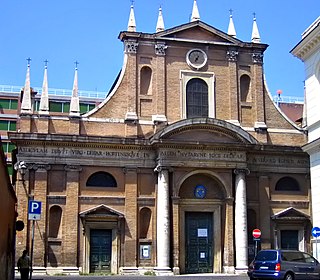
Santa Maria dell'Orto is a church in the Rione of Trastevere in Rome (Italy). It is the national church of Japan in Rome.
Sight 48: San Giovanni Battista dei Genovesi
San Giovanni Battista dei Genovesi is a Roman Catholic church on via Anicia in the Trastevere district of Rome. It is the regional church for Genoa.
Sight 49: Fontana di piazza Mastai
The fountain in Piazza Mastai is located in Rome, in the center of the square of the same name.
Sight 50: Fontana del Prigione
The Prison fountain is located in Rome, in Via Goffredo Mameli, at the intersection with Via Luciano Manara of which it forms the background. It was originally located in the disappeared Villa Montalto Peretti.
Share
Disclaimer Please be aware of your surroundings and do not enter private property. We are not liable for any damages that occur during the tours.
GPX-Download For navigation apps and GPS devices you can download the tour as a GPX file.
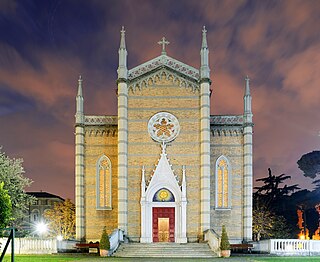
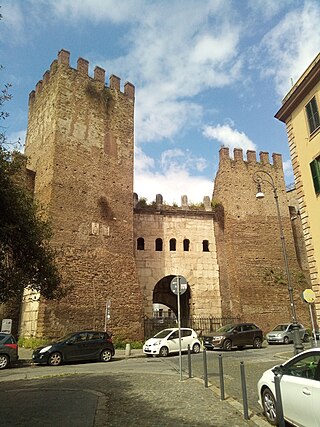
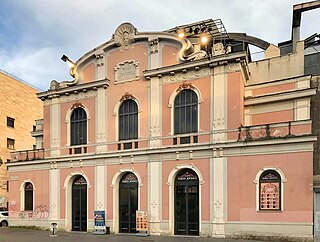
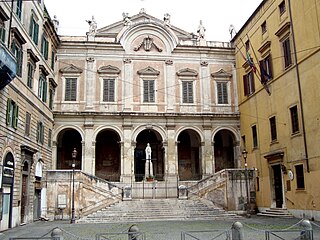
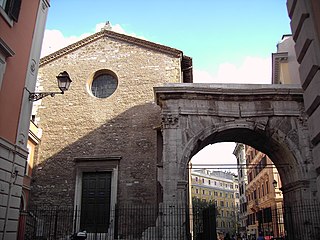
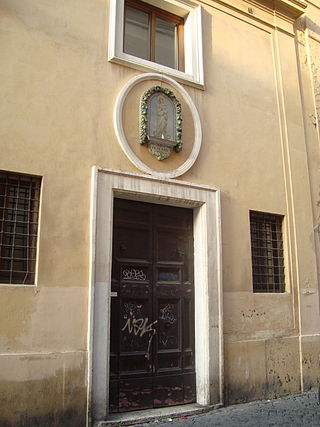
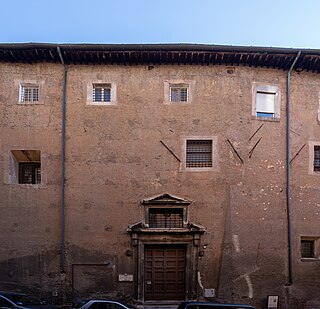
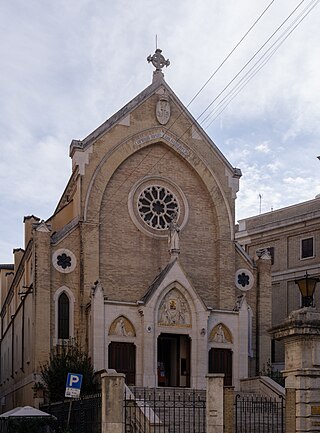

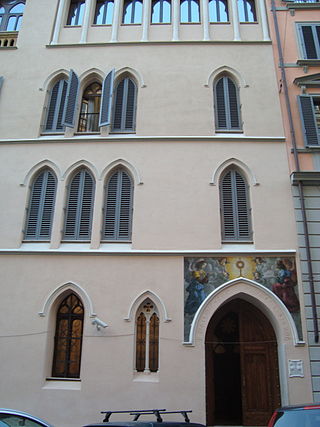
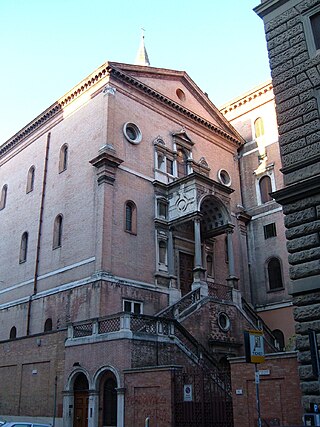
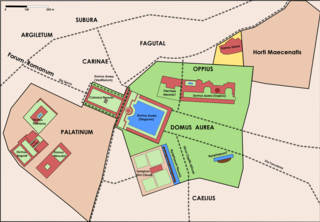
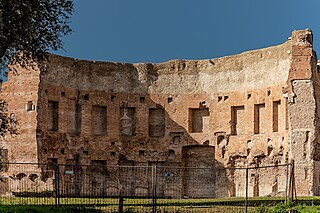
.jpg)
